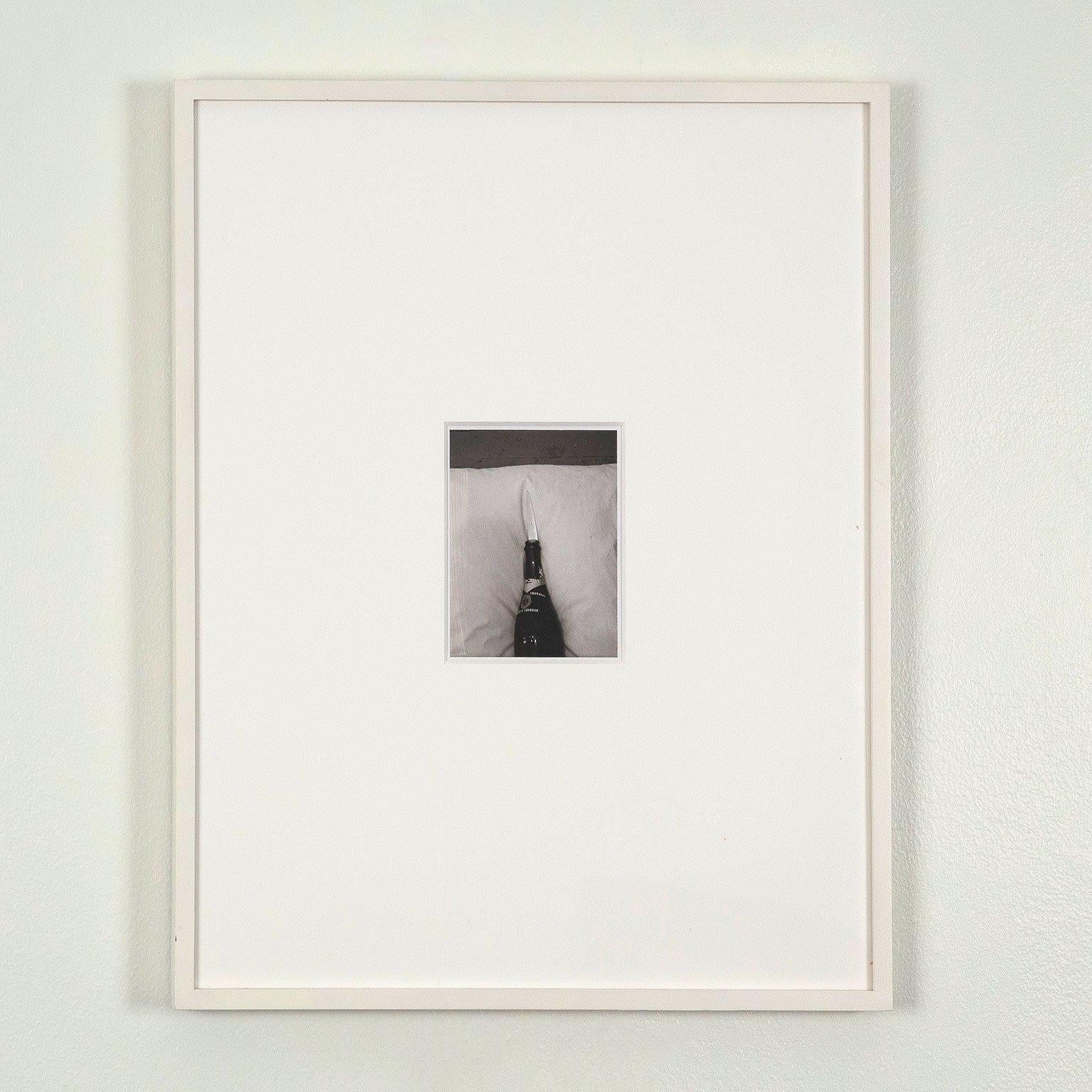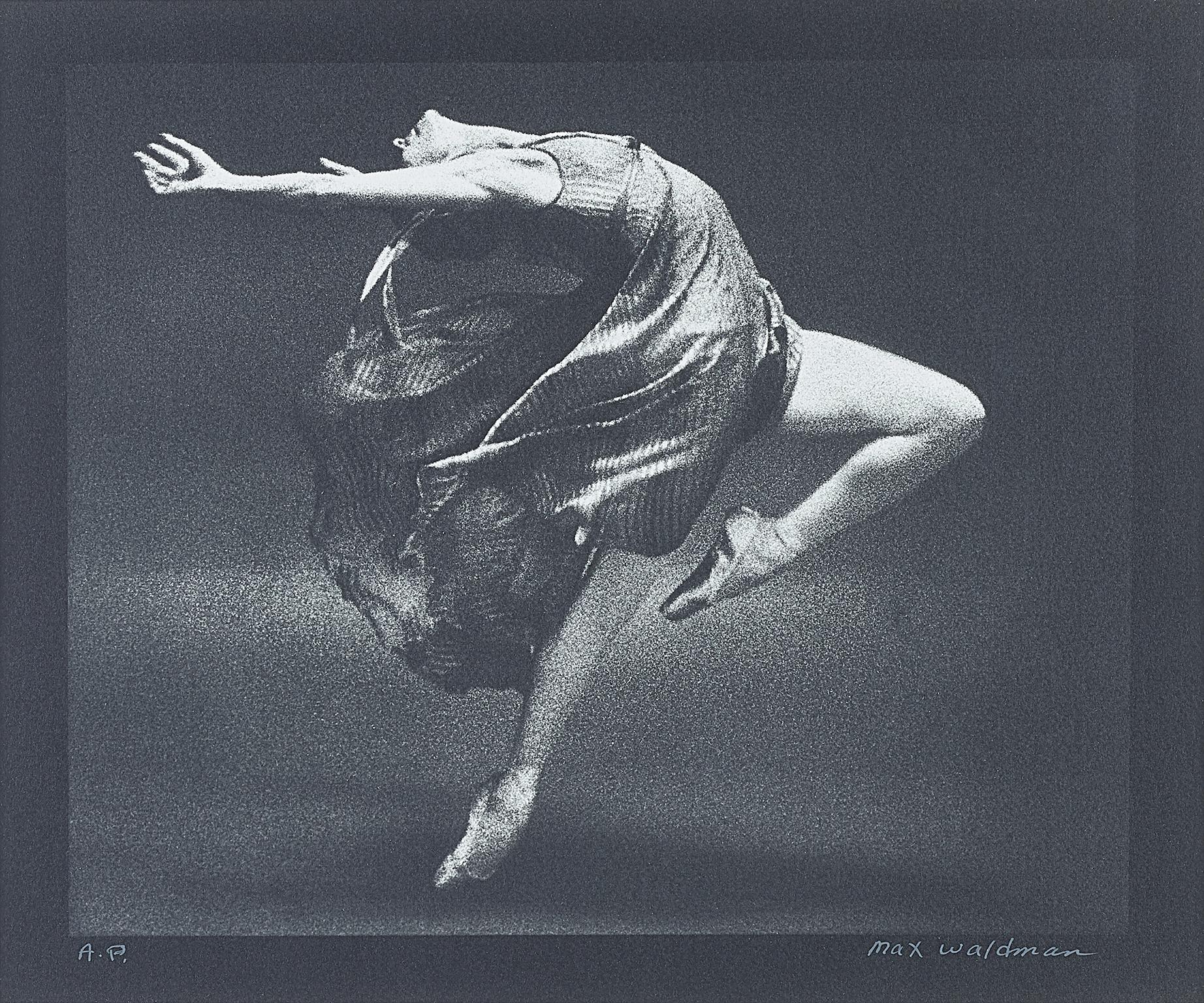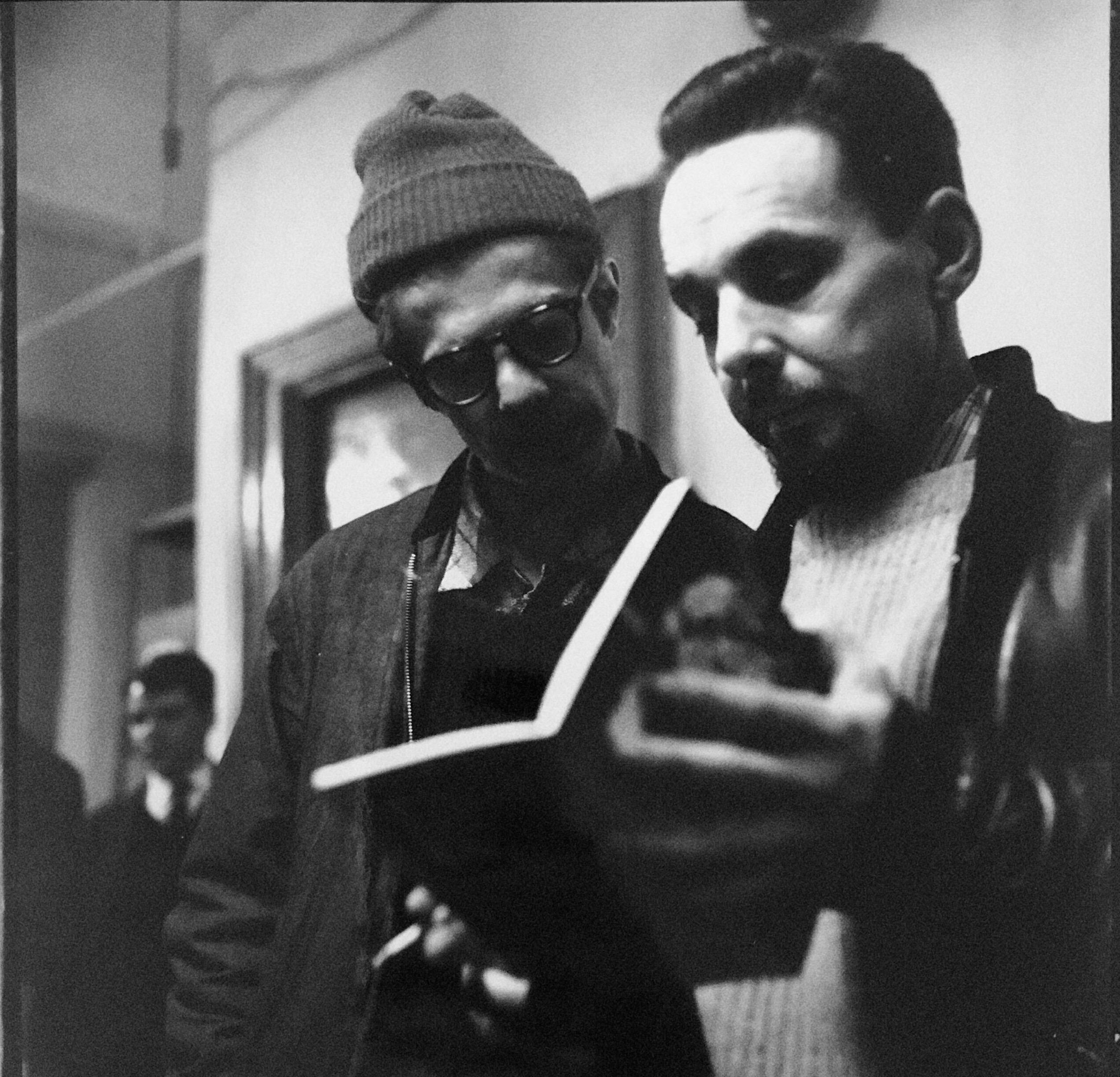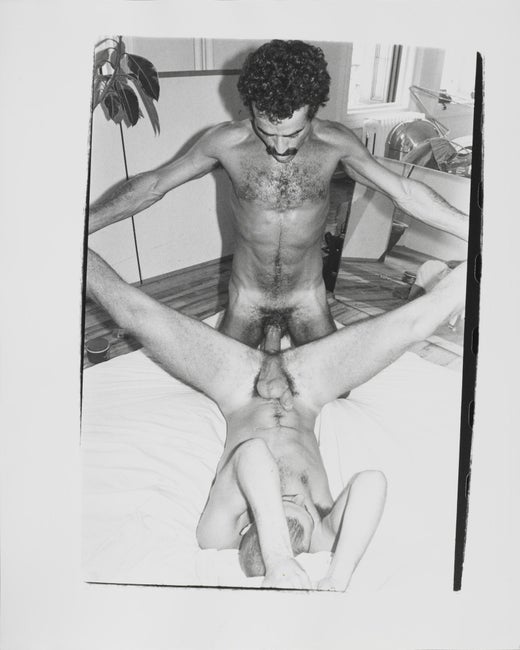Andy WarholPistol1981
1981
About the Item
- Creator:Andy Warhol (1928 - 1987, American)
- Creation Year:1981
- Dimensions:Height: 3.5 in (8.89 cm)Width: 4.25 in (10.8 cm)
- Medium:
- Movement & Style:
- Period:
- Condition:Very good condition.
- Gallery Location:Toronto, CA
- Reference Number:
Andy Warhol
The name of American artist Andy Warhol is all but synonymous with Pop art, the movement he helped shape in the 1960s. He was phenomenally prolific, and the archive of original photography, prints, drawings, paintings and other art that he left behind is beyond vast.
Andy Warhol is known for his clever appropriation of motifs and images from popular advertising and commercials, which he integrated into graphic, vibrant works that utilized mass-production technologies such as printmaking, photography and silkscreening. Later in his career, Warhol expanded his oeuvre to include other forms of media, founding Interview magazine and producing fashion shoots and films on-site at the Factory, his world-famous studio in New York.
Born and educated in in Pittsburgh, Warhol moved to New York City in 1949 and built a successful career as a commercial illustrator. Although he made whimsical drawings as a hobby during these years, his career as a fine artist began in the mid-1950s with ink-blot drawings and hand-drawn silkscreens. The 1955 lithograph You Can Lead a Shoe to Water illustrates how he incorporated in his artwork advertising styles and techniques, in this case shoe commercials.
As a child, Warhol was often sick and spent much of his time in bed, where he would make sketches and put together collections of movie-star photographs. He described this period as formative in terms of his skills and interests. Indeed, Warhol remained obsessed with celebrities throughout his career, often producing series devoted to a famous face or an object from the popular culture, such as Chairman Mao or Campbell’s tomato soup. The 1967 silkscreen Marilyn 25 embodies his love of bright color and famous subjects.
Warhol was a prominent cultural figure in New York during the 1960s, ’70s and ’80s. The Factory was a gathering place for the era’s celebrities, writers, drag queens and fellow artists, and collaboration was common. To this day, Warhol remains one of the most important artists of the 20th century and continues to exert influence on contemporary creators.
Find a collection of original Andy Warhol art on 1stDibs.
- ShippingRetrieving quote...Ships From: Toronto, Canada
- Return PolicyA return for this item may be initiated within 3 days of delivery.
- One PistolBy Andy WarholLocated in Toronto, OntarioAndy Warhol began using the big-shot Polaroid camera in 1971 and continued using it religiously until his death in 1987. Despite the camera being discontinued in 1973, he continued t...Category
1980s American Modern Black and White Photography
MaterialsPolaroid
- Moet BladeBy Robert MapplethorpeLocated in Toronto, OntarioRobert Mapplethorpe (1946 - 1989) helped elevate photography to be considered fine art in the 1970s thanks to his uncompromising images rich in contrast, from beautiful to brutal and elegant to uninhibited. Mapplethorpe’s career was as glittering as it was controversial. Feted and vilified in equal measure, he ran a successful commercial studio (for portraiture and fashion photography) while simultaneously producing some of the most contentious (and beautiful!) images of the 20th century. His depictions of gay sexuality (including S&M and bondage) provoked a fierce backlash both at the time of their creation and well into the 1990s and beyond. This unique polaroid dates from when Mapplethorpe began to focus on pure photography, abandoning the collages of the first chapter of his career. It is also a foreshadowing of his curiosity and pursuit of New York's S&M scene. This unique polaroid features an opened bottle of Moët-Chandon with a sharp blade emerging from the neck. Typical of Mapplethorpe, there is his signature balance of formalist qualities, foreboding references, with a touch of sexuality and violence. Mapplethorpe's style is instantly recognizable: simple forms set against neutral backgrounds, a razor-sharp focus, and opulent, tonal gradations ranging from inky, velvety black to luminous silver-white. Although this is a unique polaroid, its sibling is in the permanent collection of the Museum of Modern Art, New York. We believe that our example is superior to the two; the label is mostly concealed which intensifies the shapes and composition. Robert Mapplethorpe mounted over fifty solo exhibitions during his lifetime, including numerous museum shows in the USA, Europe, and Japan. Since his death, his work has continued to be exhibited and acquired by major international art institutions. Questions about this artwork? Contact us. "Untitled" (Moet Blade) USA, 1972 Unique polaroid. Annotated 'PD 708' in pencil in an unknown hand on the verso. Original stamp from Mertens Framers. 4.5”H 3.4”W (image) 15"H 8"W (framed) Very good condition. Detailed condition report by request Provenance: Xavier Hufkens...Category
1970s American Modern Black and White Photography
MaterialsPolaroid
- Weegee "Distortion: Stripes"By WeegeeLocated in Toronto, OntarioInnovative, provocative, inimitable - these are just a few of the words to describe America's boldest photographer. Arthur Fellig, better known as Weegee (1899-1968) was a ground-breaking, successful (and notorious) photojournalist. His images shot on the streets of New York City are iconic and influential. In the 1930s he became the first New York City press photographer to obtain permission to install a police radio in his car. This allowed him to follow the city's first responders and to document their duties; responding to fire, crime, debauchery and of course, murder. By the early 1940s Weegee was experiencing fatigue with crime reportage. Ironically, this was also the point when he finally began experiencing professional validation and acclaim, to the point of being a minor celebrity. Notably in 1941 he was included in The MoMA's seminal "50 Photographs by 50 Photographers" (curated by Edward Steichen). The museum would also acquire five Weegee photographs...Category
1940s American Modern Black and White Photography
MaterialsSilver Gelatin
- Weegee "A Trip to Mars"By WeegeeLocated in Toronto, OntarioWhile many first associate Weegee (aka Arthur Fellig) with New York City crime scenes, perhaps a broader and more consistent theme is that of spectacle and/or urban entertainment. The origins of his nick-name and reputation date back to the 1930s when he became the first New York City press photographer to obtain permission to install a police radio in his car. Following the city's first responders and documenting their duties, Weegee had unprecedented access to New York’s fires, crimes, debaucheries and of course, murders. During the first decade of his career these unflinching urban tragedy or crime images paid Weegee's bills, but as he became more financially independent he was more inspired to pursue photographs on his own agenda. While his oeuvre is vast, Weegee was especially drawn to entertainment: nightlife, circuses, the theatre, showgirls, city thrills, the cinema etc. Some of Weegee's most dynamic and tender (and under-appreciated!) images are related to simply having fun (in a crowd). He was not confined to one neighbourhood or demographic. He captured action, faces and events from Coney Island to the Bowery and Greenwich Village, to Times Square and Harlem. In “A Trip To Mars,” Weegee depicts a multi-generational group crowding around a large telescope...Category
1940s American Modern Black and White Photography
MaterialsSilver Gelatin
- Weegee "Sailor and Girl Kissing"By WeegeeLocated in Toronto, OntarioWeegee (1899-1968) was equally fascinated and inspired by cinema and all of its tangents, from Hollywood movie stars to ordinary civilians going to the movies. While Weegee is typically associated with crime/disaster images, the broad theme of "entertainment" is a major component of his oeuvre. An interesting and provocative sub-genre of his cinema-related work are his images of couples (often heavy-petting) in movie theatres. Recent scholarship has established that many of Weegee's supposed clandestine images were actually staged or arranged with friends or co-operative strangers. Nevertheless, Weegee created these photographs in the dark with an array of clever techniques including infrared film, filtered flashbulb and triangular prism lens. Employed in shots such as this one, the prism lens would allow the artist to “see around corners,” useful at times when his subjects were in compromising locations. These images of kissing couples, Weegee wrote in 1959, were “his best seller, year in and year out.” "Sailor and GIrl at the Movies...Category
1940s American Modern Black and White Photography
MaterialsSilver Gelatin
- Groom Kissing His BrideBy Diane ArbusLocated in Toronto, OntarioDiane Arbus (1923-1971) is one of the most influential and daring photographers of the 20th century. Arbus is best known for her unique form of documentary portraiture. She explored the uncanny, the marginalized, and the idiosyncratic characters who defied mid-century conformity. Her work has influenced some of the most renowned photographers of our time including Nan Goldin. While her career launched in the fashion world, it was years after quitting commercial photography (circa 1956) that she found her voice as an artist. With camera in hand, she followed her fascination with the eccentric individuals and oddities of New York City. Ultimately rejecting her affluent, sheltered upbringing and the mainstream fashion industry to create her own definitions of beauty. Arbus’ portraits were considered incredibly provocative for their bold representations of sexuality, chaos, and grit. She fully immersed herself within the queer and alternative communities she documented, engaged with a curious balance of mystery and homage. Shot in 1966, "Groom Kissing His Bride" is a prime example of her uncanny ability to capture even the most traditional moments (a wedding) through a lens of surrealism. Love and tension confront each other as the groom kisses the bride with an attacking passion. Her likeness disappears behind his embrace and their newlywed bodies merge together. This work also contains Arbus’ visual trademarks – a black and white palette, a square crop, and a hard flash that flattens the aesthetic wonderland of New York. Today, Arbus' work is celebrated in many major museum collections including the Art Gallery of Ontario, Art Institute of Chicago, National Museum of Modern Art (Tokyo), and Centre Pompidou (Paris). "Groom Kissing his Bride, NYC" USA, 1966 Gelatin-silver print Printed by Neil Selkirk Stamped 'A Diane Arbus photograph...Category
1960s American Modern Black and White Photography
MaterialsSilver Gelatin
- Rare Vintage Silver Gelatin and Polaroid Photograph Prints Ansel Adams PortraitBy Ansel AdamsLocated in Surfside, FLRare Vintage Silver Gelatin and Polaroid Photograph Prints in Polaroid Photo Album. These measure 10 x 8 4.25 x 3.25. it is a folder titled on it Custom Print by Polaroid the album i...Category
Mid-20th Century American Modern Black and White Photography
MaterialsPolaroid
- Caddy TailfinBy Robert FarberLocated in New York, NYCaddy Tailfin Archival pigment print on canvas 60 x 96 inches Edition of 10 AMERICANA "From rural Montana to the Manhattan skyline at dawn, from a New Mexico cowboy...Category
1980s American Modern Figurative Photography
MaterialsCanvas, Archival Pigment
- "Natalia Makarova " vintage photography. "Serge Lifar "Located in CANNES, FR"Natalia Makarova " is an gelatin print , silver bromide, numbered and signed photograph offered to " serge Lifar " by Max Waldman . Artist proof . Ser...Category
1970s American Modern Black and White Photography
MaterialsSilver Gelatin
- Signed Silver Gelatin Photograph Peter Orlovsky, Herbert Huncke Beatnik PhotoBy Fred McDarrahLocated in Surfside, FLPeter Orlovsky and Herbert Huncke - March 7 1960 Over a 50-year span, McDarrah documented the rise of the Beat Generation, the city’s postmodern art movement, its off-off-Broadway actors, troubadours, politicians, agitators and social protests. Fred captured Jack Kerouac frolicking with women at a New Year’s bash in 1958, Andy Warhol adjusting a movie-camera lens in his silver-covered factory, and Bob Dylan offering a salute of recognition outside Sheridan Square near the Voice’s old office. Not just a social chronicler, McDarrah was a great photo-journalist. For years, McDarrah was the Voice's only photographer and, for decades, he ran the Voice’s photo department, where he helped train dozens of young photographers, including James Hamilton, Sylvia Plachy, Robin Holland and Marc Asnin. His mailbox was simply marked "McPhoto." An exhibit of McDarrah’s photos of artists presented by the Steven Kasher Gallery in Chelsea was hailed by The New York Times as “a visual encyclopedia of the era’s cultural scene.” artists in their studios, (Alice Neel, Philip Guston, Stuart Davis, Robert Smithson, Jasper Johns, Franz Kline), actors (Dustin Hoffman, Robert De Niro on the set of “Taxi Driver”), musicians (Janis Joplin, Alice Cooper, Bob Dylan) and documentary images of early happenings and performances (Yayoi Kusama, Charlotte Moorman, Al Hansen, Jim Dine, Nam June Paik). The many images of Andy Warhol include the well-known one with his Brillo boxes at the Stable Gallery in 1964. Woody Allen, Diane Arbus, W. H. Auden, Francis Bacon, Joan Baez, Louise Bourgeois, David Bowie, Jimmy Breslin, William Burroughs, John Cage, Leo Castelli, Christo, Leonard Cohen, Merce Cunningham, William de Kooning, Jim Dine, Mark di Suvero, Marcel Duchamp, Bob Dylan, Federico Fellini, Allen Ginsberg, Robert Indiana, Mick Jagger, Jasper Johns, Kusama, John Lennon, Sol Lewitt, Roy Lichtenstein, Nam June Paik, Elvis Presley, Claes Oldenburg, Yoko Ono, Robert Rauschenberg, Lou Reed, James Rosenquist, Mark Rothko, Ed Ruscha, Robert Smithson, Susan Sontag, Andy Warhol, and others. McDarrah’s prints have been collected in depth by the J. Paul Getty Museum and the National Portrait Gallery, Washington. His work is in numerous public and private collections. Peter Anton Orlovsky was an American Beat poet and actor. He was the long-time partner of Allen Ginsberg. Herbert Edwin Huncke (January 9, 1915 – August 8, 1996) was an American writer and poet, and active participant in a number of emerging cultural, social and aesthetic movements of the 20th century in America. He was a member of the Beat Generation and is reputed to have coined the term. Huncke had been a writer, unpublished, since his days in Chicago and gravitated toward literary types and musicians. In the music world, Huncke visited all the jazz clubs and associated with Billie Holiday, Charlie Parker and Dexter Gordon...Category
1960s American Modern Black and White Photography
MaterialsSilver Gelatin
- Vintage Silver Gelatin Print Photo Mets Baseball Sports Photograph AmericanaBy Fred McDarrahLocated in Surfside, FLYouth at mets Game waiting for Autograph on August 20th, 1970 Photographer is Fred McDarrah Over a 50-year span, McDarrah documented the rise of the Beat Generation, the city’s pos...Category
1970s American Modern Black and White Photography
MaterialsSilver Gelatin
- Original Fred Mcdarrah Press Photograph 1960's Woodstock Music Festival PhotoBy (after) Fred McdarrahLocated in Surfside, FLPeople walking alongside puddle at Woodstock in Bethel NY 1969 Photographer is Fred McDarrah Over a 50-year span, McDarrah documented the rise of the Beat Generation, the city’s po...Category
1960s American Modern Black and White Photography
MaterialsPhotographic Paper
Recently Viewed
View AllRead More
Andy Warhol Piles Up the Gifts in This Fanciful Christmas Print
Created in the late 1950s, it’s one of a surprising number of holiday-themed works by the prolific Pop artist.
Jordan Schnitzer Started Collecting Warhol Prints Very Early — and Never Stopped
The Portland, Oregon, native has amassed a collection of art so outstanding that multiple museums bear his name and several exhibitions at any given time are showing pieces he owns. We caught up with Schnitzer to find out how he got started collecting Warhol and where his pieces can be found right now.






